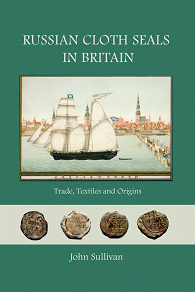
Isbn:
978-18-4217-918-5
Förlag: Oxbow Books
Kategori:
Historia Ekonomi & marknadsföring
Tillgänglig sedan: februari 2021
Förlag: Oxbow Books
Kategori:
Historia Ekonomi & marknadsföring
Tillgänglig sedan: februari 2021
E-bok
Russian Cloth Seals in Britain
For many decades in the 18th and 19th centuries, Russia was the world's greatest exporter of flax and hemp and Great Britain its major customer. Most studies of flax and hemp and their associated industries have hitherto concentrated on the economic and historical events surrounding the rise and fall of these industries in Britain. This book is based on a large body of new material consisting of lead-alloy seals that were attached to bundles of flax and hemp exported from Russia and aims chiefly to describe the different seals that were used and to explain the reasons why they were employed. It offers a short history of their use, a guide to their identification and a catalogue of items recovered in Britain, opening up a valuable new source of material for analysing a different aspect of the history of commercial relations between Russia and Britain and providing assistance for finders and museum curators in identifying and deciphering these objects correctly. The text guides the reader through the different types of seal so far recorded using illustrations, transliterations of the Cyrillic texts found on the seals and explanatory tables, as well as a comprehensive catalogue. Analysis is conducted of the information found in the seals. This information provides us with a picture of the manner in which the export of these products from Russia to Britain was handled and allows us to make comparisons over different periods of time and to analyse the different systems of quality control used. It also enables us to record the geographical distribution of Russian ports used for the export of flax and hemp to the UK, where the spread of their distribution tells us something of the redistribution of these imports and provides an understanding of the use to which their by-products were put as part of the agricultural practices of the 18th and 19th centuries.
Logga in för att låna
Information
Stöds av följande plattformar
PC/Mac
Surfplatta Läsplatta
Smartphone
